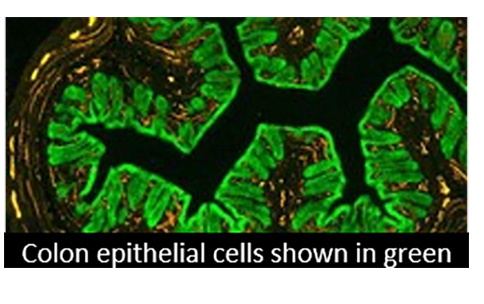
Understanding the causes of inflammatory bowel disease is difficult because the associated abdominal pain can occur without any obvious changes to the structure of the colon or signs of inflammation. Because pain sensations can be carried by sensory neurons, one factor in the generation of abdominal pain could be abnormal sensory neuron activity, which can be influenced by secretions from cells called “epithelial cells” that line the interior of the colon. Understanding interactions between colon epithelial cells and sensory neurons could help us understand and treat abdominal pain. To study the interactions between the types of cells, a SPARC-funded team led by investigators Dr. Brian Davis and Dr. Kathryn Albers used genetically modified mice that contain blue light-activated colon epithelial cells to examine signaling between colon epithelial cells and neurons. These mouse colon epithelial cells could be specifically stimulated by blue light without any physical or chemical stimulation, allowing the study of their effects apart from other factors. Stimulating the epithelial cells caused activity in the pain-sensing neurons and behavioral responses similar to those that result from pain-inducing physical stimulation of the colon. Further study found that firing of neurons was likely triggered by release of a molecule called ATP from the colon epithelial cells. The results indicate that the activity of the colon epithelial cells alone, without any physical or chemical stimulation, could lead to abdominal pain through activation of the pain-sensing neurons. This study advances the understanding of how colon sensory neuron activity is regulated and could aid in development of new treatment strategies for inflammatory bowel disease.
Reference: Optogenetic Activation of Colon Epithelium of the Mouse Produces High-Frequency Bursting in Extrinsic Colon Afferents and Engages Visceromotor Responses. Makadia, PA, Naijar, SA, Saloman, JL, Adelman, P, Feng, B, Margiotta, J, Albers, KM, Davis, BM. June 2018. J Neurosci. 38(25): 5788-5798.


